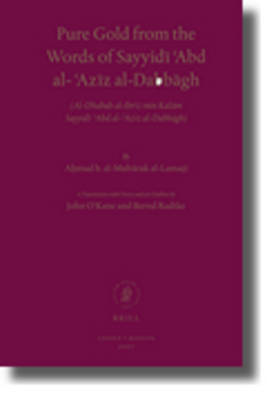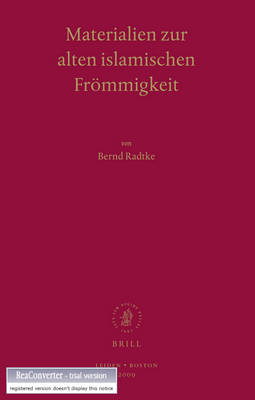Basic Texts of Islamic Mysticism
2 primary works
Book 1
Pure Gold from the Words of Sayyidi 'Abd al-'Aziz al-Dabbagh
by John O'Kane and Bernd Radtke
Published 1 January 2007
Around 1720 in Fez Ahmad b. al-Mubarak al-Lamati, a religious scholar, wrote down the words and teachings of the Sufi master 'Abd al-'Aziz al-Dabbagh. Al-Dabbagh shunned religious studies but, having reached illumination and met with the Prophet Muhammad, he was able to explain any obscurities in the Qur'an, hadiths and sayings of earlier Sufis. The resulting book, known as the Ibriz, describes how al-Dabbagh attained illumination and access to the Prophet, as well as his teachings about the Council of the godly that regulates the world, relations between master and disciple, the darkness in men's bodies, Adam's creation, Barzakh, Paradise and Hell, and much more besides.
This 'encyclopaedia' of Sufism with its many teaching stories and illustrations provides a window onto social life and religious ideas in Fez a generation or so before powerful outside forces began to play a role in the radical transformation of Morocco.
This 'encyclopaedia' of Sufism with its many teaching stories and illustrations provides a window onto social life and religious ideas in Fez a generation or so before powerful outside forces began to play a role in the radical transformation of Morocco.
Book 2
Arabic texts dating from the 3rd-4th/9th-10th centuries by the following five authors are here presented: Abu Shaykh al-Burjulani, Ibrahim al-Khuttali, Ibn al-Nahhas, Abu 'Abd Allah al-Rudhabari and Ibn Hamakan. The texts appear in transliteration along with a German translation. Their chains of transmission (isnads) are analyzed and parallels with other authors are noted. The subject dealt with throughout is mystical piety. These highly interesting materials throw light on Islamic mysticism's early stage of development.

